American Giro d'Italia stage winners
Americans have been competing in the Giro d'Italia for 25 years, yet their exploits in Italy's Grand Tour are frequently overshadowed by the attention given to success in the Tour de France.
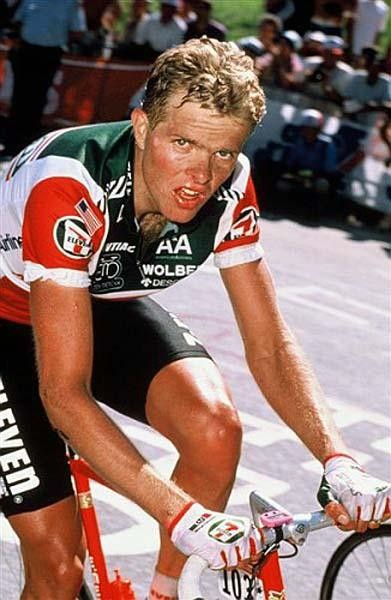
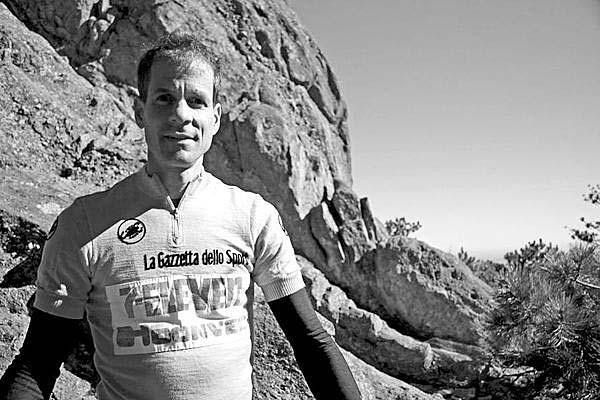
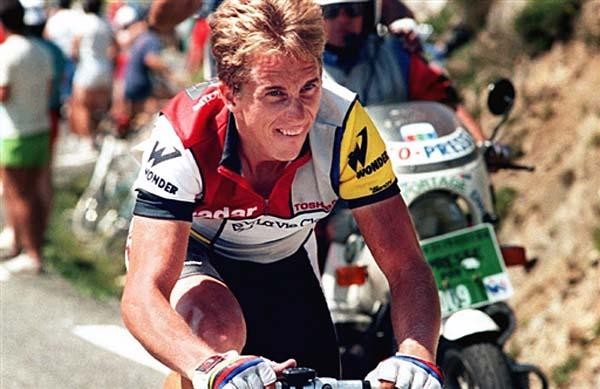
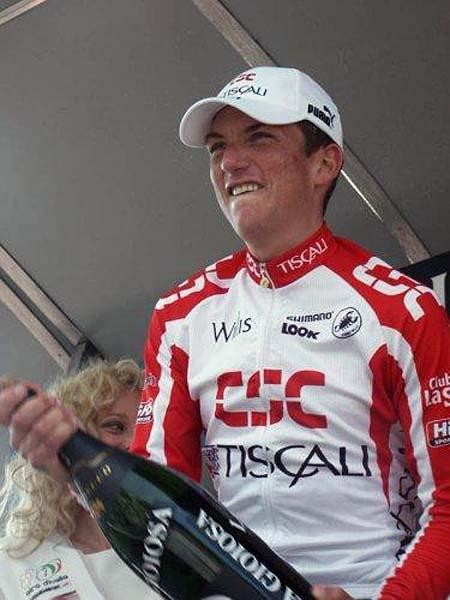
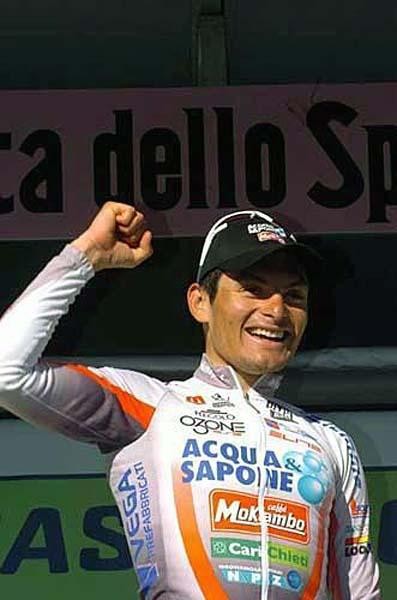
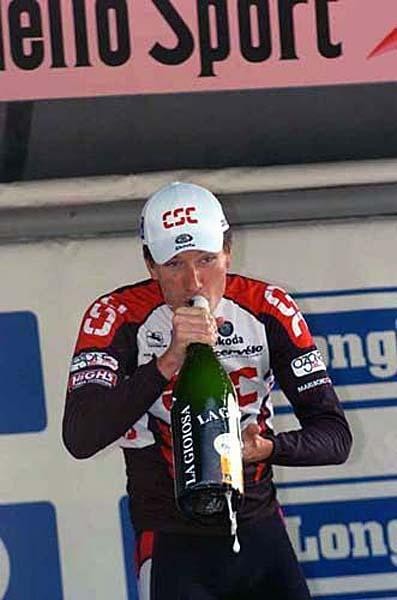
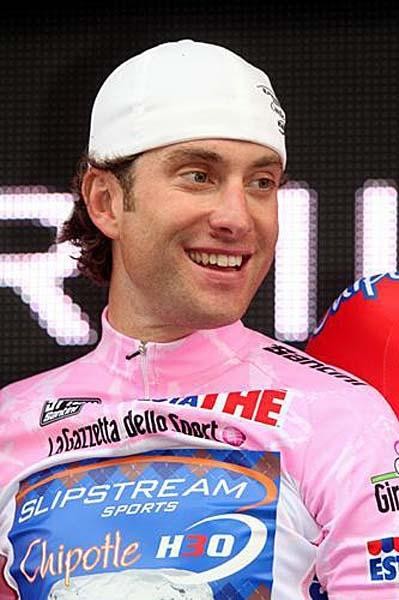
Stars & Stripes on the Giro podium
Americans have been competing in the Giro d'Italia for 25 years, yet their exploits in Italy's Grand Tour are frequently overshadowed by the attention given to success in the Tour de France. Cyclingnews' Peter Hymas discovers that as more riders from the US have made their mark however, the importance of the Giro d'Italia to the development of 'globalised' cycling cannot be discounted.
From the upstart American 7 Eleven squad, which was greeted in Europe with skepticism and occasional hostility, to Team CSC's American riders and the current Garmin-Slipstream outfit, professionals from the US have etched a place in the annals of Giro history.
The successes of American pioneers such as Ron Kiefel, Andy Hampsten and Greg LeMond were not fluke occurrences and their standing amongst cycling fans at home and abroad was enhanced by their success in Italy. They also paved the way for the new generation, which now enjoys a guaranteed seat at the Giro table for three weeks in May.
As the Giro d'Italia celebrates its centenary edition let's take a look back at the elite contingent of American professionals who have won stages in the Italian Grand Tour and have left their mark in the event's lengthy, storied history.
1985 – Ron Kiefel
On June 1, 1985 first-year professional Ron Kiefel became the first American to win a stage of a Grand Tour. After 203 kilometres of hard racing from L'Aquila to Perugia, the 25-year-old 7 Eleven rider crossed the finish line first, barely holding off a charging peloton, not quite sure that he indeed was the victor.
The latest race content, interviews, features, reviews and expert buying guides, direct to your inbox!
Early in the stage a 20-man break left the peloton and despite explicit instruction from their team directors to make the early move, no 7 Eleven riders made the selection.
Luckily, Francesco Moser's team took up the chase and brought back the escapees with 10 kilometres to go, shredding the field in the process. Kiefel's job was to keep 7 Eleven's GC contender Andy Hampsten out of the wind and once the peloton began the five-kilometre stair-step ascent to the finish in Perugia Kiefel thought his day was done.
However, the peloton bunched up around a hairpin turn and Kiefel's momentum carried him clear to the front just as three riders attacked. Kiefel successfully bridged to Acacio Da Silva, Marino Lejarreta and Roberto Conti.
Soon, each of Kiefel's companions attacked in succession, but without success.
"Then I thought, 'Hell, it's my turn to attack' so I attacked," said Kiefel.
Kiefel's three companions were absorbed by the peloton as he pressed onwards, only to find quite a surprise ahead.
"I put my head down and I go as hard as I can and all of a sudden I catch [Gerrie] Knetemann," said Kiefel. "I thought, 'How in the hell did he get out here?' I had no idea. Back then you didn't have all the race radios and you didn't know what was going on all the time."
Kiefel held off Knetemann and a charging field led in by Moser by a handful of seconds.
"All of a sudden I hit the line and I didn't know if there was somebody else out there. The only way I really knew was all of these flash bulbs lit up in rapid succession. That's when I knew I won the race."
When asked of his memories of the podium, Kiefel said it was all a blur.
"I don't remember the podium that much because it's a bit shocking and it happened so quickly. That euphoria quickly leaves and you're back in the trenches fighting."
Kiefel described what makes the Giro unique when compared to other Grand Tours.
"When we raced the Giro many times you'd just be riding along at 30km/h for four hours. It's a 220 kilometre stage and you've ridden 120 kilometres and you've got another 100 kilometres to go and you think, 'Oh man...this is so long.' All you do is just sit there and you drink and eat all your paninis. You're just bloated to the gills because you're bored to tears.
"Then, all of a sudden the television comes on, the cameras come out, and the race lights up from 30km/h to 70km/h. You're just sprinting as hard as you can, your belly's bloated and your legs are just crying in pain because they're full of lactic acid. It's the most painful two minutes of your whole day.
"The Tour de France was a lot more nervous. It started out hard and it went harder than you wanted. You're on the edge a lot more whereas at the Giro guys would be spread all over. You'd be laughing, you'd be talking to the team directors back in the cars, you could stop to pee and you wouldn't worry.
"You'd kind of get a sense that something would happen and everybody would toot their horn. You'd make your way back from the cars, the race would go and then it would settle down. That was the Giro style."
1985 & 1988 – Andy Hampsten
Imagine that your first race as a professional cyclist happens to be a Grand Tour. Not only that, but during your baptism by fire in the highest realm of professional cycling you manage to pull off a stage win for your young, upstart team.
That's exactly what happened to Andy Hampsten in the 1985 Giro d'Italia when he won the 20th stage, a 58-kilometre race starting in St.Vincent and finishing with a 17-kilometre ascent to Valnontey Gran Paradiso.
The 23-year-old Hampsten was given a one-month contract with 7 Eleven to race the Giro d'Italia and he definitely made the most of his opportunity. In keeping with 7 Eleven's sometimes unconventional approach to the staunchly traditional European sport, such as having women soigneurs on their team, Hampsten arrived at the start line wearing a skinsuit which elicited a few chuckles from the Europeans.
One hour and 31 minutes later, Hampsten silenced the critics by crossing the finish line first, narrowly beating Colombian Reynel Montoya Jaramillo by a handful of seconds and third place finisher Marino Lejarreta by more than one minute.
The 7 Eleven team definitely earned the respect of the European peloton by winning two stages as well has having Hampsten finish 20th overall on general classification. However, what truly defined Hampsten's career and made his name synonymous with American success at the Giro d'Italia was his legendary overall win at the 1988 Giro, including the iconic snow-ridden stage over the Passo Gavia.
What many fail to realize is that Hampsten did not win the 14th stage over the Gavia, Erik Breukink has that honour, but Hampsten did win two other stages in addition to the general classification. Hampsten's Giro d'Italia palmarès make him the American with the most stage wins, with three victories, as well as the only American to win general classification.
Two days prior to the Gavia, Hampsten won stage 12, besting Pedro Delgado and Alberto Volpi on an uphill finish.
Four days after earning the maglia rosa on the Gavia, Hampsten faced a stiff test to his race leadership: the 18th stage's 18-kilometre uphill time trial from Levico Terme to Vetriolo Terme. Hampsten entered the stage with a 42 second advantage over Breukink, but the 7 Eleven leader blazed up the ascent in 43:37, beating many of the world's best climbers, and putting 1:04 into his Dutch rival.
Hampsten would fend off the challenges of Breukink and Swiss climber Urs Zimmerman over the four remaining stages, one mountainous, two flat and the time trial finale, to forever etch his name into Giro d'Italia history.
1986 – Greg LeMond
While Greg LeMond is best known for his three victories in the Tour de France, he also had success in the Giro d'Italia. In 1985 LeMond finished third overall, the first podium appearance by an American, and followed that up with a fourth place finish in 1986.
LeMond became the third American to win a stage at the Giro d'Italia on May 16, 1986, during the 194 kilometre stage five from Nicotera to Cosenza.
In the closing kilometers LeMond attacked and soloed to victory, narrowly fending off the field led in by Italians Giuseppe Saronni and Massimo Ghirotto two seconds later.
2002 – Tyler Hamilton
After a 14-year hiatus that followed Andy Hampsten's legendary 1988 Giro d'Italia overall victory another American claimed a stage victory. On May 26, 2002, Tyler Hamilton won the 30.3-kilometre Numana individual time trial, his first-ever Grand Tour stage win.
Hamilton, riding for Bjarne Riis' CSC-Tiscali team, roared across the line in 41:21, finishing 31 seconds ahead of crono powerhouse Serguei Gonchar and 41 seconds in front of Australian Cadel Evans.
Emulating former teammate Lance Armstrong's style, Hamilton pedaled his way to victory using smaller gears and a higher cadence than most other riders and led at all intermediate time checks.
"I am very happy with this result after my problems at the beginning of the Giro," Hamilton said after the stage. "I suffered on the climbs after my fall in the fifth stage but I think that problem is behind me. This is a very important win for me."
Hamilton showed remarkable tenacity during the 2002 Giro d'Italia, having crashed three times prior to the 14th stage time trial including suffering a fractured shoulder on stage five.
Hamilton would persevere to the Giro's conclusion in Milan to finish second place overall, 1:41 behind race winner Paolo Savoldelli, the best-ever Grand Tour performance for the Massachusetts native.
2004 – Fred Rodriguez
The 2004 Giro d'Italia was the stomping grounds of Alessandro Petacchi whose Fassa Bortolo lead-out train delivered him to a record-breaking nine stage victories. Petacchi may very well have won 10 stages if it wasn't for the cleverness and determination of Acqua e Sapone sprinter Fred Rodriguez on the Giro's ninth stage
"Petacchi had been winning pretty much all of the sprints that year," said Rodriguez. "A lot of teams, including my team, were starting to get a bit discouraged that the challenge was more than they could handle.
"I can remember on that day I was very adamant that I could beat him and willing to prove everybody wrong."
Although Petacchi had already won four stages approaching the finish that day, Rodriguez noticed perhaps a chink in the Italian sprinter's armour.
"One of the things which kept happening in his lead-outs was the last man, I don't know if it was on purpose or just the way it worked out, from 500 metres to 250 metres the speed would decrease and it would create a bit of a cluster for the sprinters behind waiting for Petacchi to go. I always ended up just getting caught in this speed letdown where there was a lot of jockeying and hooking waiting for Petacchi to start his sprint.
"This time I thought, 'I have to anticipate that lull.'"
Rodriguez timed his move to perfection, jumped along the left side of the road and narrowly held off Petacchi and Angelo Furlan for the victory.
The victory was particularly sweet for Rodriguez who was racing for the Italian Acqua & Sapone-Caffè Mokambo team that season, a team whose primary focus was the Giro d'Italia.
"I'd always been on teams that focused on the Tour de France," said Rodriguez. "But that year I signed with Acqua & Sapone and our major goal was the Giro. It was an Italian team and so when you put all that together with racing in Italy for me it was the sense of racing at home.
"At the Tour there's a lot more media, it's a lot more hectic, but at the Giro it felt a bit more low-key while still being a huge event.
"It's a sense of closer community and a passion for the sport. The fans that came out to watch the Giro really seemed more in tune with what cycling is whereas at the Tour de France, being such a bigger event, it's more than just about cycling. It's more of a social event.
"The Giro really concentrates on the quality of what cycling's all about. You get this feeling that it's all about the racing.
In addition to the racing, Rodriguez chimed in with a final thought about what makes the Giro d'Italia so special.
"There's the Italian food and their coffee. You wake up in the morning and get a good cup of coffee, that makes a big difference when you're on the road for three weeks."
2005 & 2008 – David Zabriskie
When Zabriskie gets the green light to go all out in a time trial, watch out. There was no doubt that the 26-year-old Zabriskie, the US national time trial champion, was talented in racing against the clock, but even Zabriskie wasn't quite expecting the outcome of stage eight's 45-kilometre journey from Lamporecchio to Firenze during the 2005 Giro d'Italia.
"I remember that I was one of the earlier riders and I was told to go all out so Ivan [Basso] could have my split times," said Zabriskie. "I knew every bit of the road because we'd done training camps there earlier that winter so I was pretty familiar with it. I just went out and had a good ride."
"I didn't go into it thinking I'd win," said Zabriskie who was in his first year of riding for Bjarne Riis' Team CSC squad. "Then I had to wait around a long time. At one point I felt that I was going to win, and then I forgot about Ivan. He came through only a couple of seconds behind me and after he came through I knew that I won.
Zabriskie blazed through the hilly 45-kilometre time trial in 58:13 to beat his teammate Ivan Basso by 17 seconds and eventual 2005 Giro d'Italia winner Paolo Savoldelli by 44 seconds.
Zabriskie was also a key member of the Slipstream Chipotle squad's winning team time trial performance in the opening stage of the 2008 Giro d'Italia.
"It was what we all went there to do. We all spent time in Girona getting ready for it and it was a pretty big deal for us.
"It was very exciting. I was only there for two days unfortunately, but it was a good win.
Unfortunately for Zabriskie, he crashed during stage two and had to abandon due to a fractured first vertebrae.
Zabriskie is typically blunt when considering what makes the Giro d'Italia a unique experience.
"The thing with the Giro is they try to make it as insane as possible for the benefit of the spectators. The transfers are just out of this world and you're sitting in the bus about as much time as you're racing.
"It used to be the easier of the three Grand Tours, more mellow and relaxed, but ever since I started doing it in 2005 I think it's gotten a lot more competitive and the riders don't take it as easy as they used to.
"I never got to experience the easy days of the Giro. It's still controlled somewhat, but it's definitely intense. In 2007 it seemed like we'd have a pretty hard day on then an easier day. One day on, one day off.
Zabriskie will ride the centenary Giro d'Italia for Garmin-Slipstream and should be a threat in all of the tests against the clock. The final day's time trial in Rome holds special significance for the Utah native.
"That's my son's one-year birthday."
2008 – Christian Vande Velde
Christian Vande Velde kicked off the 2008 Giro d'Italia in dramatic fashion for Slipstream-Chipotle's Grand Tour debut, donning the race's maglia rosa after crossing the finish line at the head of a winning team time trial effort. As Vande Velde and his Garmin-Slipstream teammates face the pressure of repeating the feat at the centenary Giro, the feeling of last year's performance still resonates.
"There was a lot of emotion flowing. We were the underdogs and that's the perfect situation going into the race. It was just a fun time. I remember stopping after the race knowing that we did the best we could and if anyone beat us hats off to them."
Being a part of the Giro's centenary edition provides an additional appeal for Vande Velde. "In 2003 it was the 100th anniversary of the Tour and I missed that so I'm really excited about being a part of the 100th anniversary of the Giro. It's just a little bit different, starting with the team time trial again and ending in Rome. It's going to be a spectacular race with the long time trial and the short mountain stage."
Vande Velde has been thinking about what makes the Giro d'Italia a special event.
"I've been reading a lot about that lately and thinking about that myself. I think at the Giro it's mostly Italian whereas at the Tour and Vuelta it's a very international field. The Giro is Italian particularly with the fashion and the tifosi. I think it's more emotionally based for the home team, the Italian riders."
Vande Velde recalls some of the moments which only seem to happen in the Giro.
"There are days where you go through a town and you might be going easy or you might be going hard and than all of a sudden you have random people like Bettini sprint to the front. You wonder, 'What's going on?' and then everybody slams on their brakes.
"Suddenly you have people passing out pastries, cookies and ice cream and everyone grabs as much as they can and start stuffing their faces. Then they jump back on the bike and keep on riding. That's just weird and crazy to me [laughs]. We get back on the bike and everyone acts like that's a normal thing and you go on with the rest of the race."
Based in the southeastern United States, Peter produces race coverage for all disciplines, edits news and writes features. The New Jersey native has 30 years of road racing and cyclo-cross experience, starting in the early 1980s as a Junior in the days of toe clips and leather hairnets. Over the years he's had the good fortune to race throughout the United States and has competed in national championships for both road and 'cross in the Junior and Masters categories. The passion for cycling started young, as before he switched to the road Peter's mission in life was catching big air on his BMX bike.